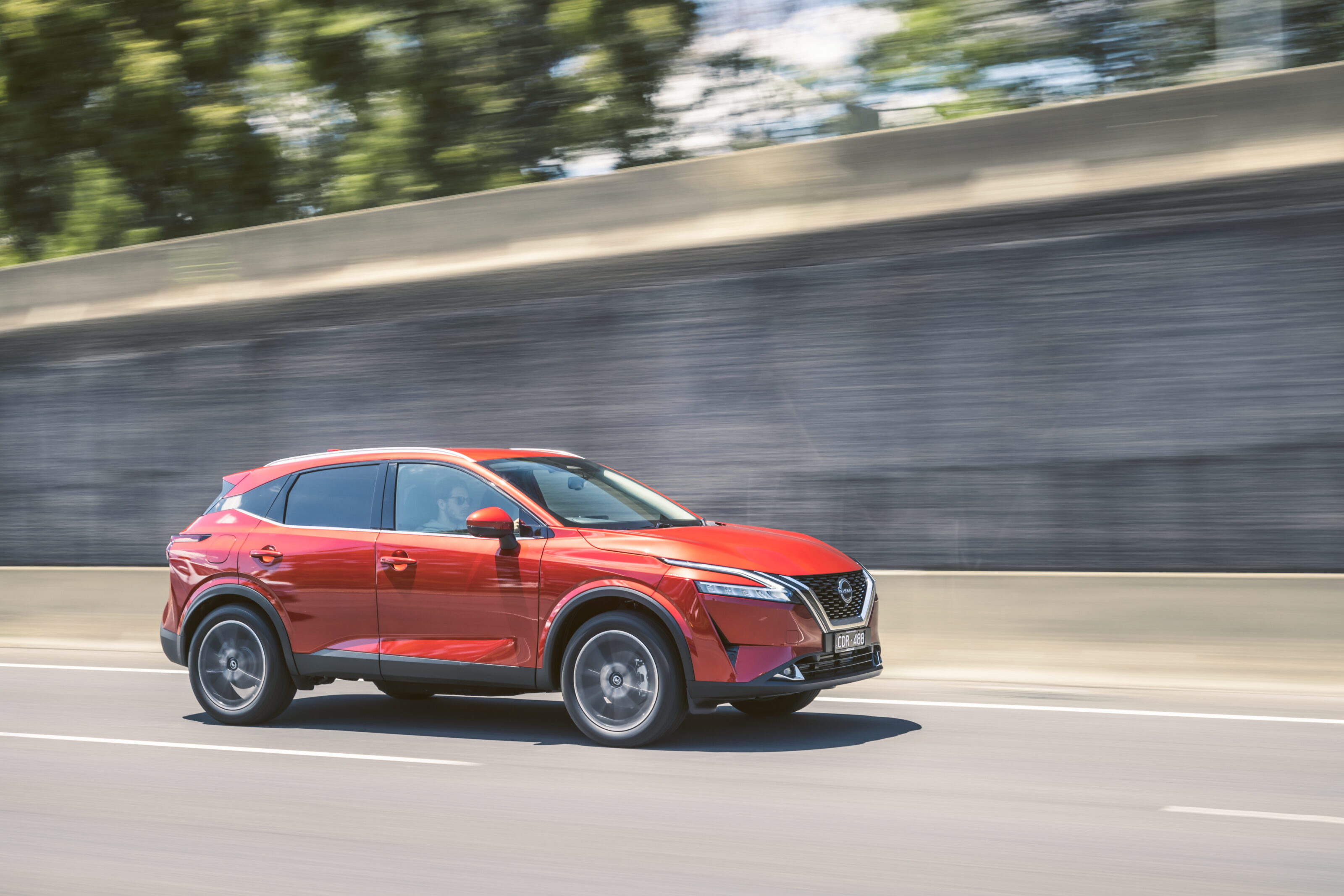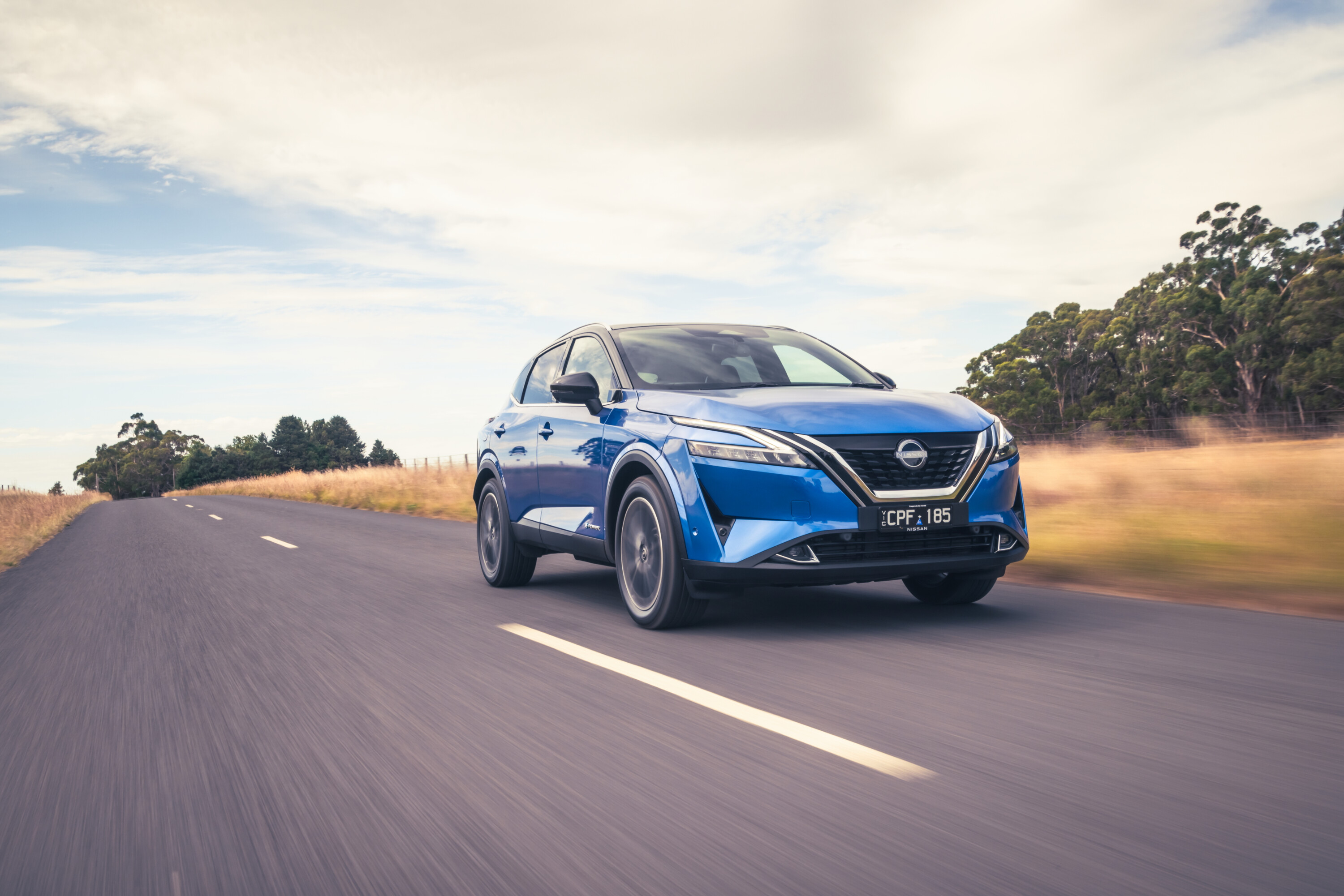Score breakdown
Things we like
- Strong 1.3-litre turbo
- Plush interior with good use of space
- Good road-holding
Not so much
- Much more expensive than before
- Expensive to service
- Unsettled on uneven roads
- Infotainment can be glitchy
The 2023 Nissan Qashqai finally arrived in Australia in late 2022 following much anticipation – and 15 years after the first-generation model, badged Dualis, landed here. It forms part of the Japanese car-maker’s refreshed line-up that brings popular nameplates into the modern era.
Complete with more tech, a new turbo-petrol engine, bigger proportions and sleeker looks, the third-generation Qashqai is targeting a healthy slice of Australia’s hotly-contested small SUV segment.
Pricing, however, is up by between $3300 and $8300 depending on the variant.
The ST-L variant we’re testing here, which sits exactly in the middle of the five-grade range, costs $7590 more than the model it replaces.
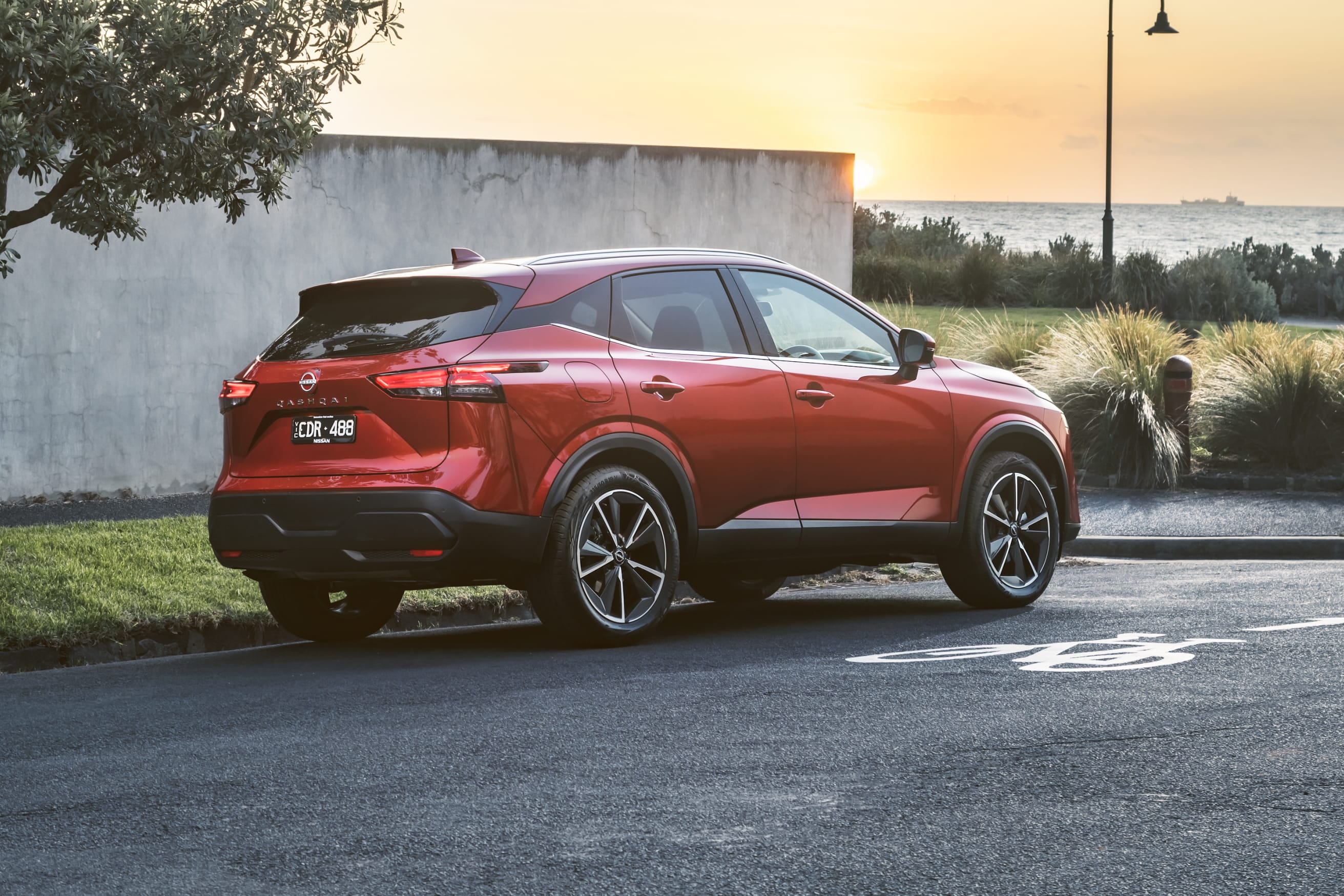
JUMP AHEAD
- How much is it, and what do you get?
- How do rivals compare on value?
- Interior comfort, space and storage
- What is it like to drive?
- How is it on fuel?
- How safe is it?
- Warranty and running costs
- VERDICT
- Specifications
How much is it, and what do you get?
| 2023 Nissan Qashqai ST-L features | |
|---|---|
| 19-inch alloy wheels | LED headlights with adaptive beam |
| 7.0-inch digital cluster | 12.3-inch touchscreen |
| Dual-zone climate control | Wireless Apple CarPlay |
| Heated front seats | Wireless phone charger |
| Front and rear parking sensors | Privacy glass for second row and rear |

The new Qashqai line-up comes in four grades, with hybrid e-Power variants expected to follow later this year.
It starts with the ST costing from $33,890, followed by the ST+ for $37,890, the ST-L (as we had on test here) for $42,190, and finishes up with the top-grade Ti for $47,390. All prices are before on-road costs.
The Qashqai is available in five colours: Magnetic Blue, Fuji Sunset Red, Ceramic Grey, Ivory Pearl and Super Black. The only option is a contrasting roof colour for an extra $500.
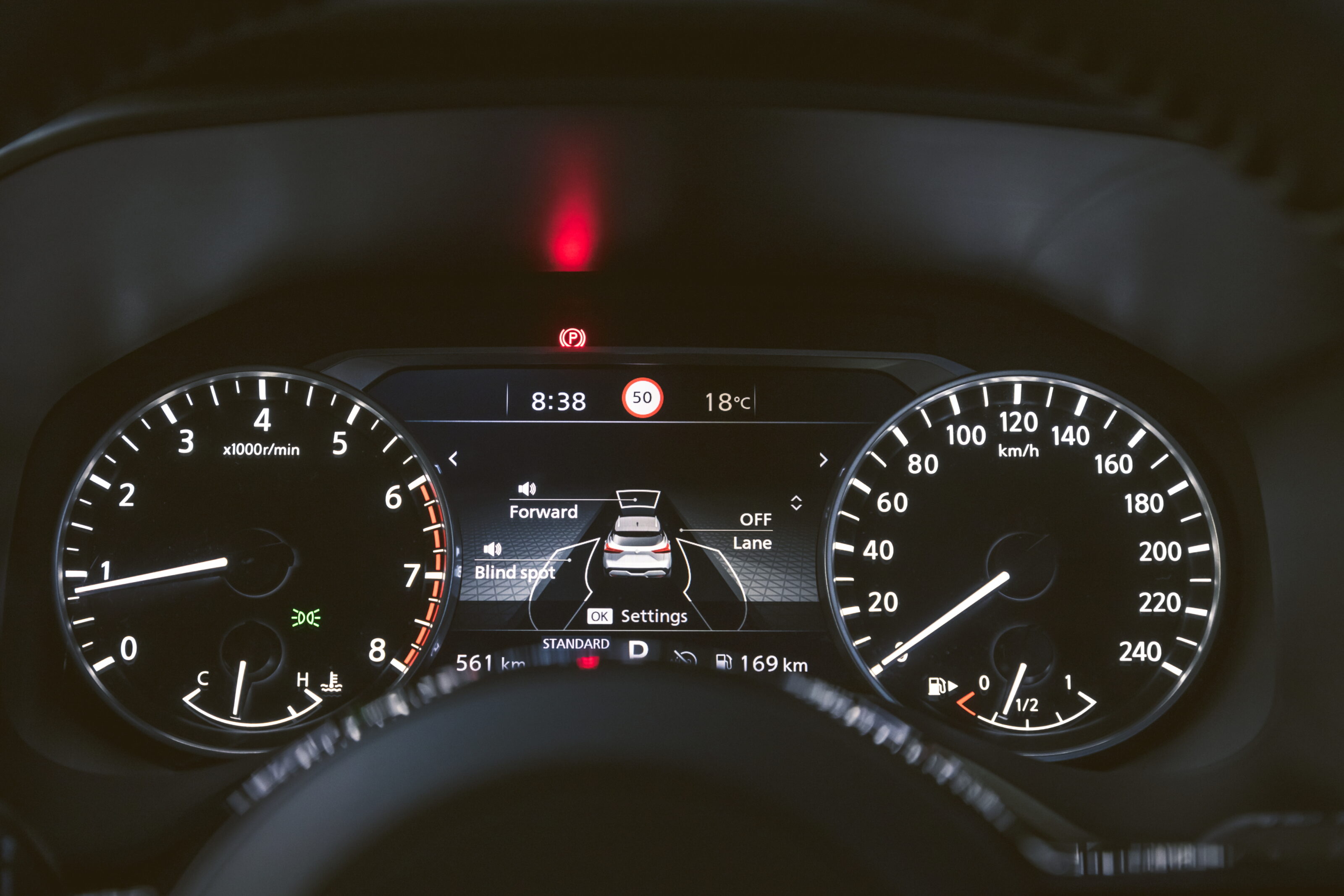
As standard, the ST-L grade gets a 12.3-inch infotainment screen (compared to the ST’s 8.0-inch unit) 19-inch alloy wheels (up from the 17s on the ST and 18s on the ST+), LED headlights with adaptive driving beam, a wireless phone charger, dual-zone climate control, a heated leather-accented steering wheel and heated front seats, privacy glass, front parking sensors and an eight-way electrically adjustable driver’s seat.
It loses out on a few luxuries found in the top-spec Ti, such as a panoramic sunroof, front massage seats, a 10-speaker Bose audio system and ambient door lighting. Nothing you’d miss too much then.
Only features such as the hands-free powered tailgate and head-up display would make daily driving in the Ti a bit easier than the ST-L.
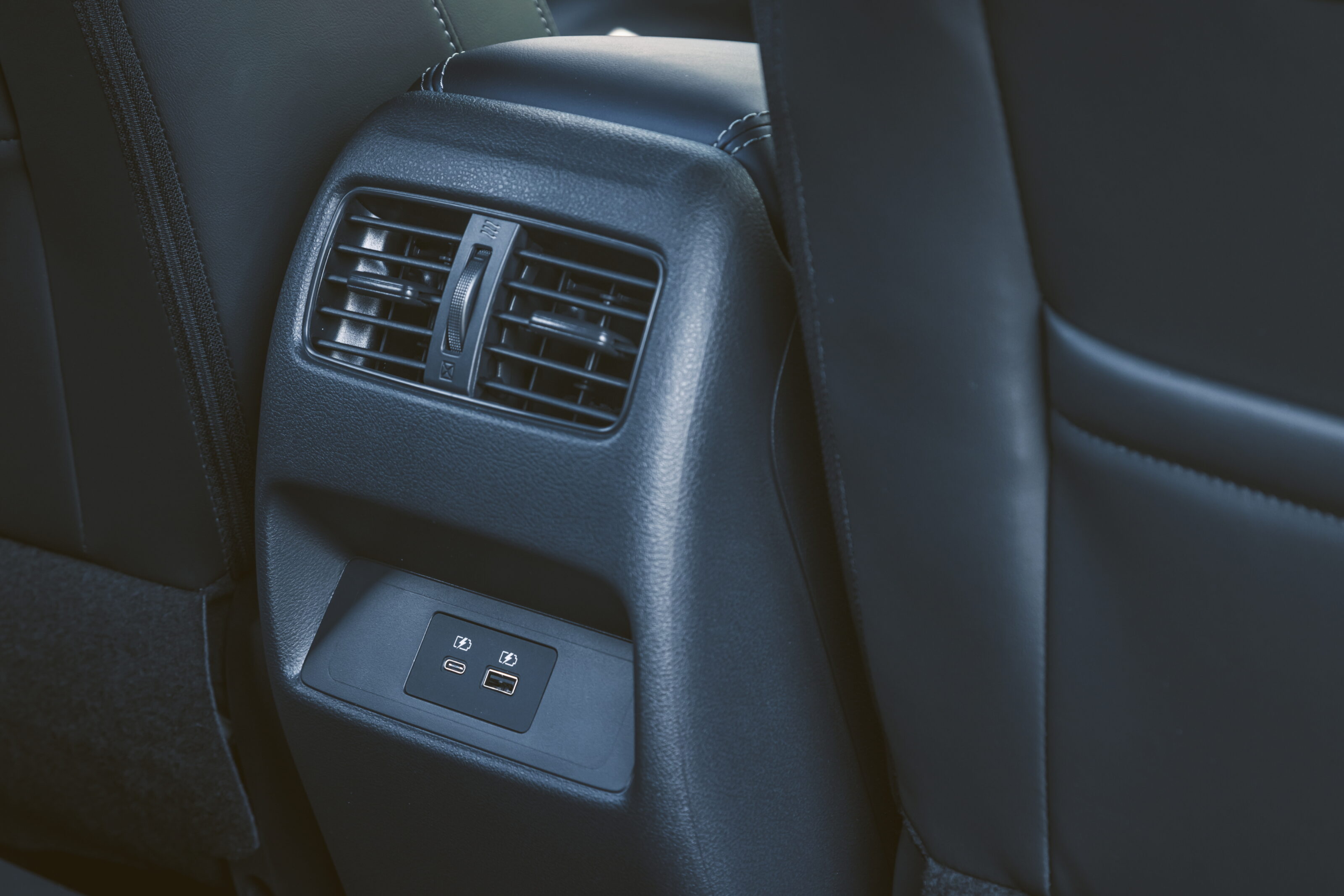
How do rivals compare on value?
Compared to some of its competitors, the new Qashqai’s mid-spec ST-L variant gets a lot of tech – including heated seats and steering wheel – but it comes at a higher price.
The Toyota Corolla Cross GXL, for example, which starts from $36,750 before on-road costs, also features a 7.0-inch digital display, has wireless Android Auto/Apple CarPlay and a leather-accented steering wheel – but it misses out on a wireless phone charger and puts up with a smaller 10.5-inch infotainment unit.
The $43,550 Corolla Cross Atmos petrol that’s a direct rival to the ST-L is only slightly pricier but has standard features such as JBL audio, panoramic roof, electric front seats, and auto tailgate that aren’t available in the Qashqai unless you step into the flagship Ti (from $47,490).
Some rivals also offer all-wheel drive for similar money to the Qashqai ST-L where the Nissan is front-drive only.

Similarly, the Mazda CX-30 G25 Touring ($38,190 before on-road costs) has its pros and cons, gaining a real leather steering wheel and keeping the 7.0-inch display, but losing wireless Android Auto/Apple CarPlay and utilising an even smaller 8.8-inch rotary dial-controlled infotainment system.
Like the Corolla Cross, it also has a bigger engine, a 2.5-litre petrol in this case, but only comes with front-wheel drive at this grade.
Meanwhile, the Kia Seltos Sport+ AWD ($41,990 drive-away) has neither wireless charging nor wireless Android Auto/Apple CarPlay, and comes with a 10.25-inch touchscreen.
Look inside the Nissan stable and you can even have the larger – and equally fresh – X-Trail medium SUV for just $1000 over the Qashqai. The X-Trail ST-L misses out on some features but gains in other equipment areas and offers even more interior space.
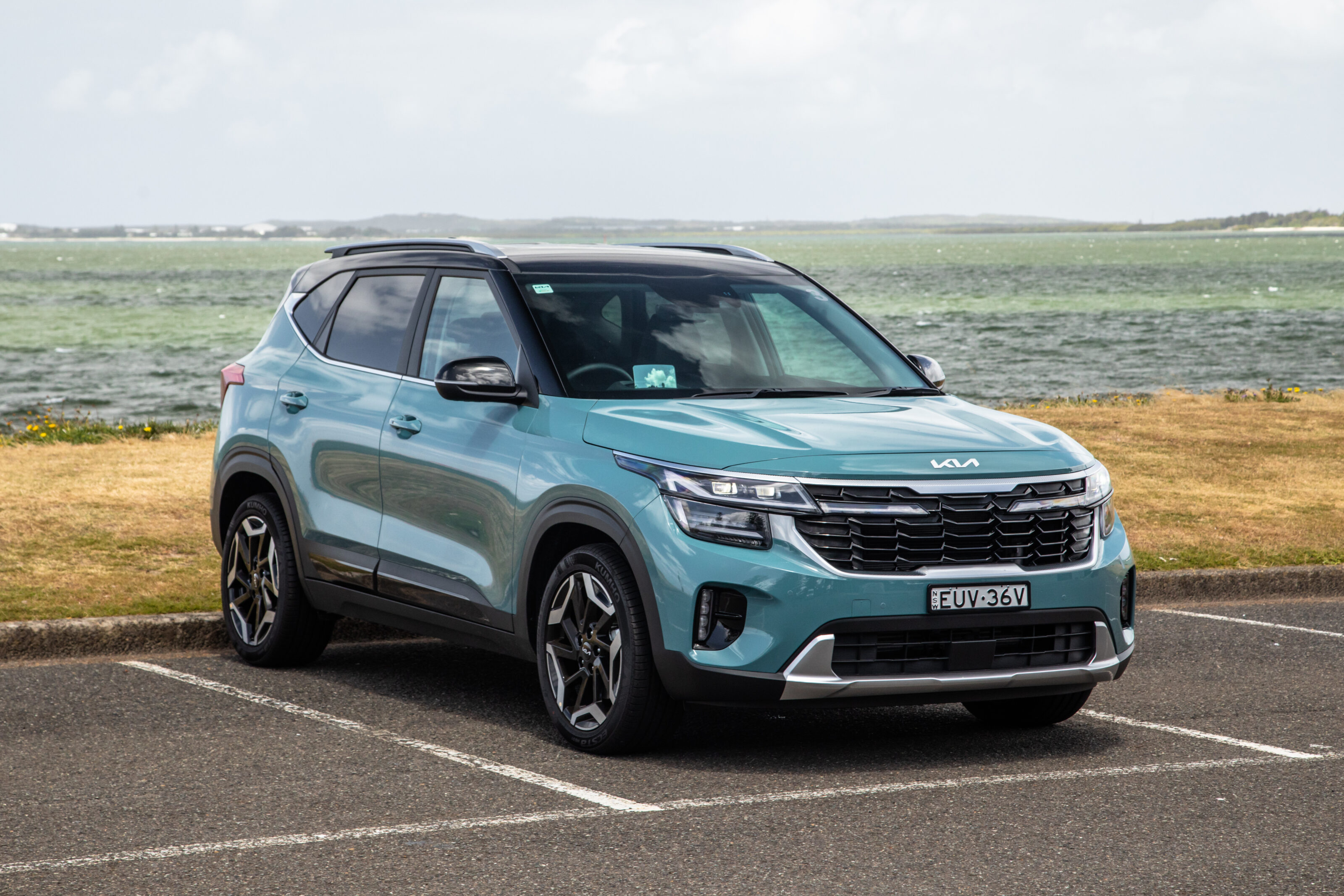
Interior comfort, space and storage
The interior of the new Qashqai is a big step up from the previous generation, with a much cleaner, more premium and less busy appearance than its predecessor.
Seat upholstery is a combination of leather and fabric (the latter of which is a little scratchy), with the dark blue leather contrasting the black plastic on the door cards and dash for a more distinctive look.
The seats are suitably comfortable for long or short journeys, with power adjustment on the driver’s side helping to find that perfect position. It’s a pleasant place to be. The only exception to this is the position of the brake pedal, which we found was high and forced our right foot to adopt an awkward angle.

A sliding gear selector, as opposed to the traditional gearstick, and the larger infotainment unit being set up on the dash, rather than embedded in piano black plastic, provide a sleeker finish than before too.
However, while the 12.3-inch unit looks impressive due to its increased size and thin tablet-esque style when switched off, we weren’t blown away by the on-screen appearance, which felt a tad dated and at times it proved glitchy.
Changing between Apple CarPlay profiles (if one was wireless and the other connected via cable) proved tricky at times, the volume controls would sometimes not work for no apparent reason, and calls appeared to stay connected on the digital cluster screen (when made via wired CarPlay) even when they had ended.
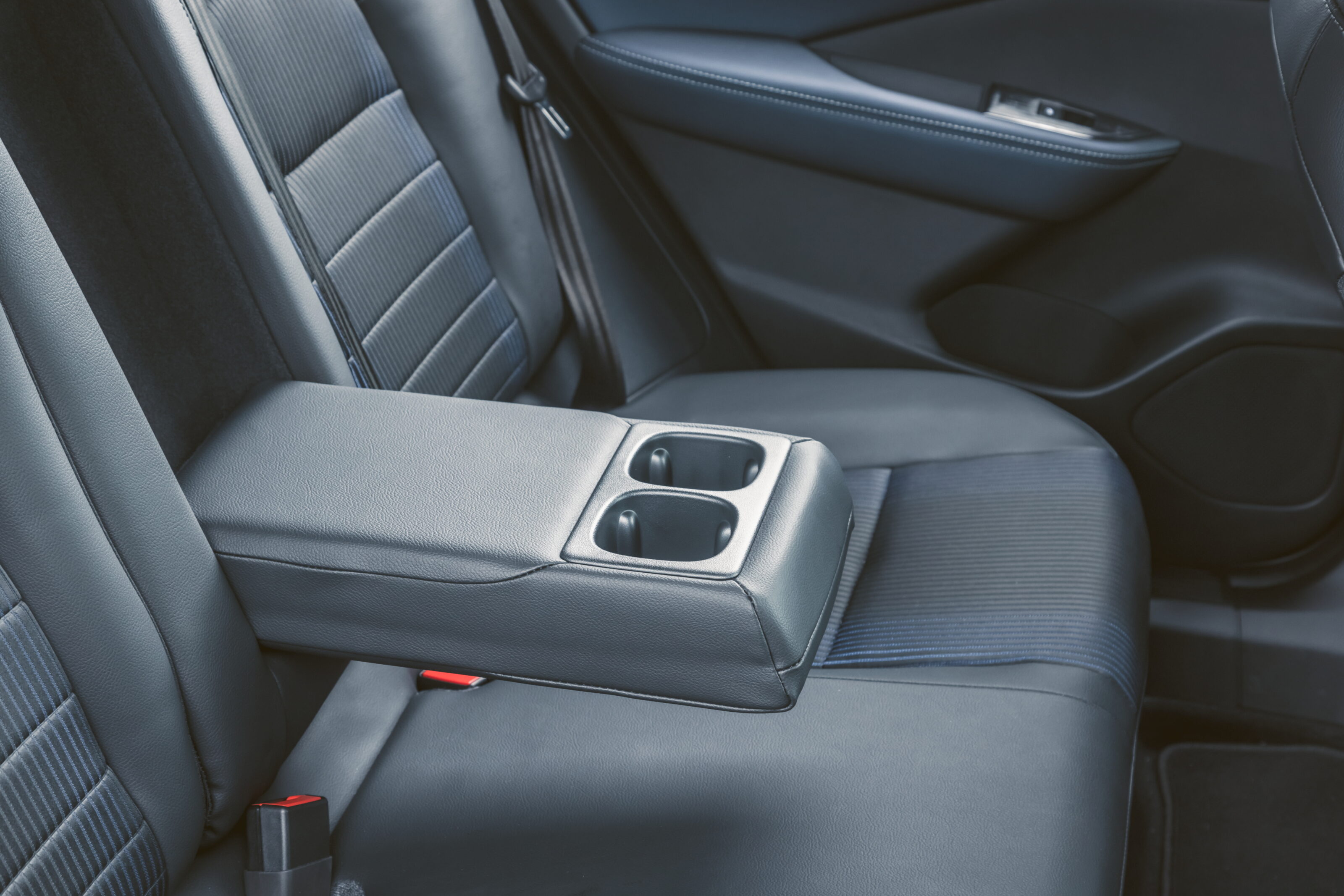
When it comes to space, for a small SUV the Qashqai is surprisingly roomy, with good legroom front and rear, a decent-sized bin in the centre console, two cup holders for the front and two for the back, and enough room in each door for a bottle too, if not much else.
Rear occupants can also make use of two map pockets, as well as charge devices via either USB-A or USB-C ports because there’s one of each.
And for young families, installing a child seat is relatively simple, with easily-found access points for the ISOFIX anchors (although they are covered by those annoying little clips that will get lost the second you take them off) and even the presence of a hard plastic parcel shelf doesn’t impede the hooking up of the top tether too much either.
One major plus is the width of the rear door openings though for getting little ones in and out. The doors open to 85 degrees, so almost a complete right angle, and hold themselves there – a rarity but a godsend for parents.
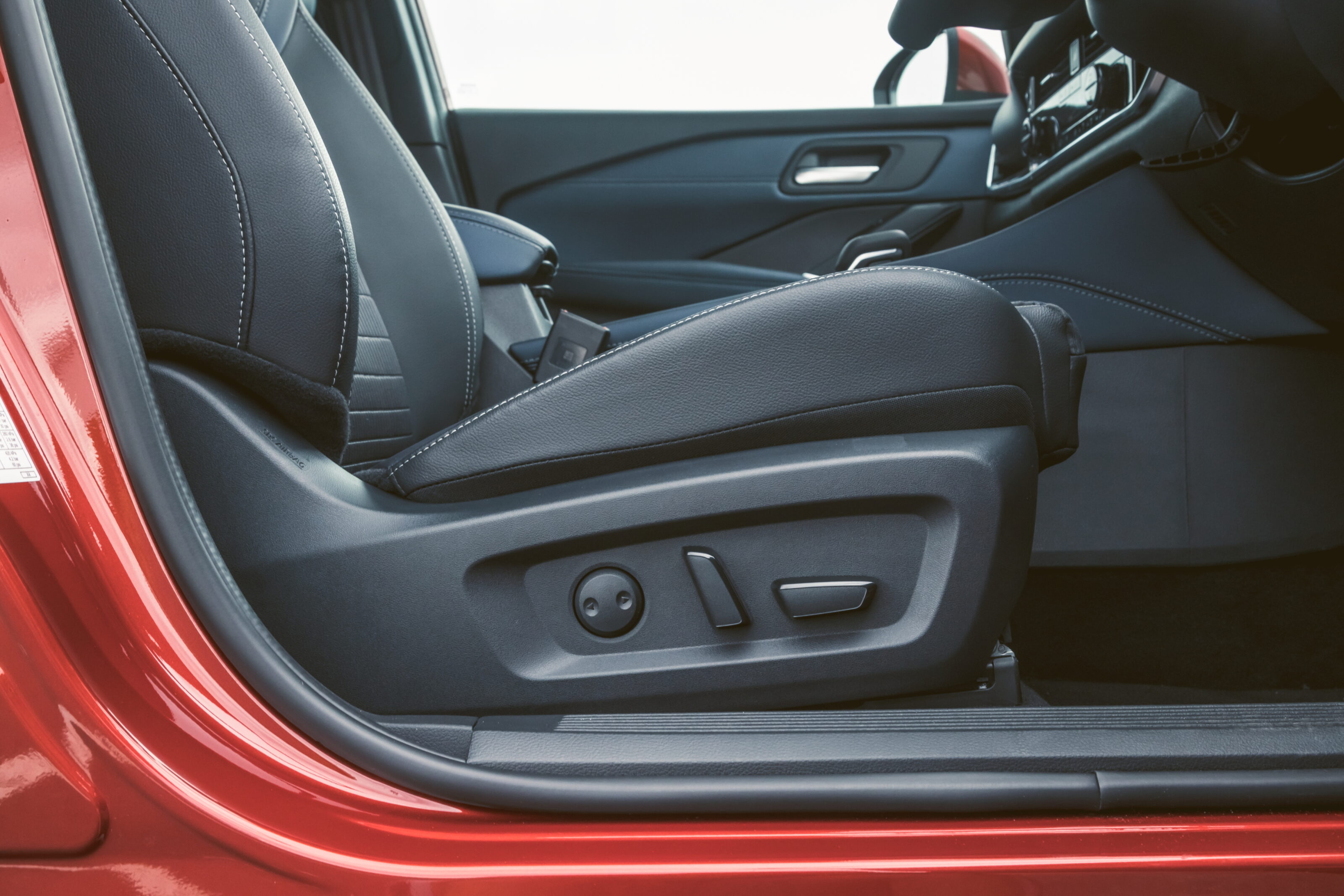
Boot space
The boot of the Qashqai is ample for an SUV of its size and easily competes with its nearest rival, the Toyota Corolla Cross, only falling short by a mere seven litres at 429L with all the seats up.
With the rear row folded, that number rises to 1524L, and it can be split 60:40, with the larger section on the front passenger’s side.
It’s not cavernous, and it has no side cubbies or spaces to put little items, but the boot is more than capable of accommodating a week’s worth of groceries, a pram plus associated baby/child gear, or all the bits and bobs needed for a day out at the pool or beach. There’s a full-size spare wheel, so the floor doesn’t have the option to drop any further.
Mini matchup: Boot space
| Model | Wheelbase | Boot capacity |
|---|---|---|
| Nissan Qashqai | 2665mm | 429L |
| Toyota Corolla Cross | 2640mm | 436L |
| Mazda CX-30 | 2655mm | 317L |
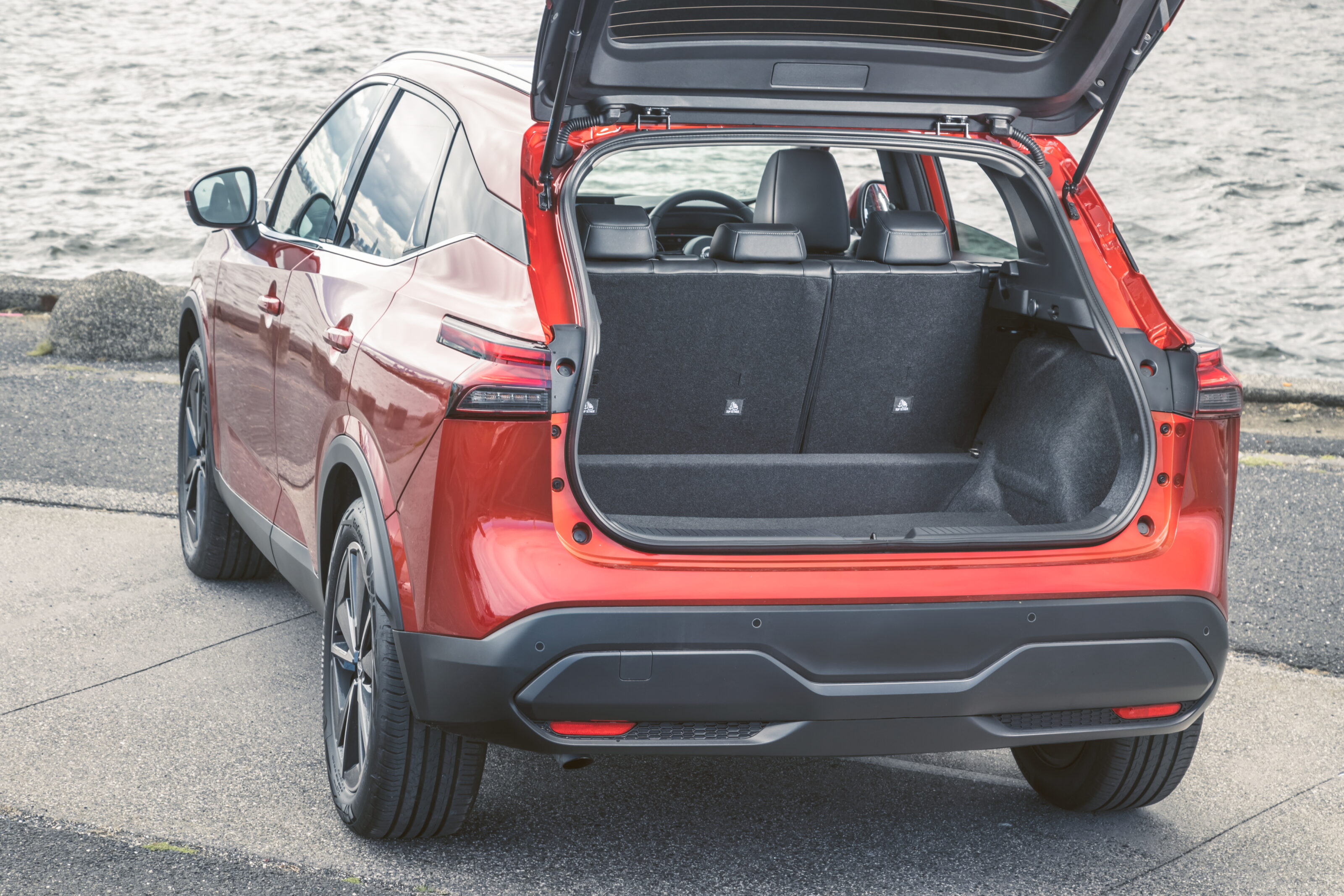
What is it like to drive?
The 1.3-litre turbo petrol engine is a welcome step-up over the previous Qashqai’s 2.0-litre naturally aspirated unit.
The turbo helps deliver a noticeably stronger mid-range and the engine overall is quite refined.
Continuously variable (CVT) autos can spoil throttle response and refinement but Nissan maintains its reputation for one of the better interpretations of the stepless transmission.
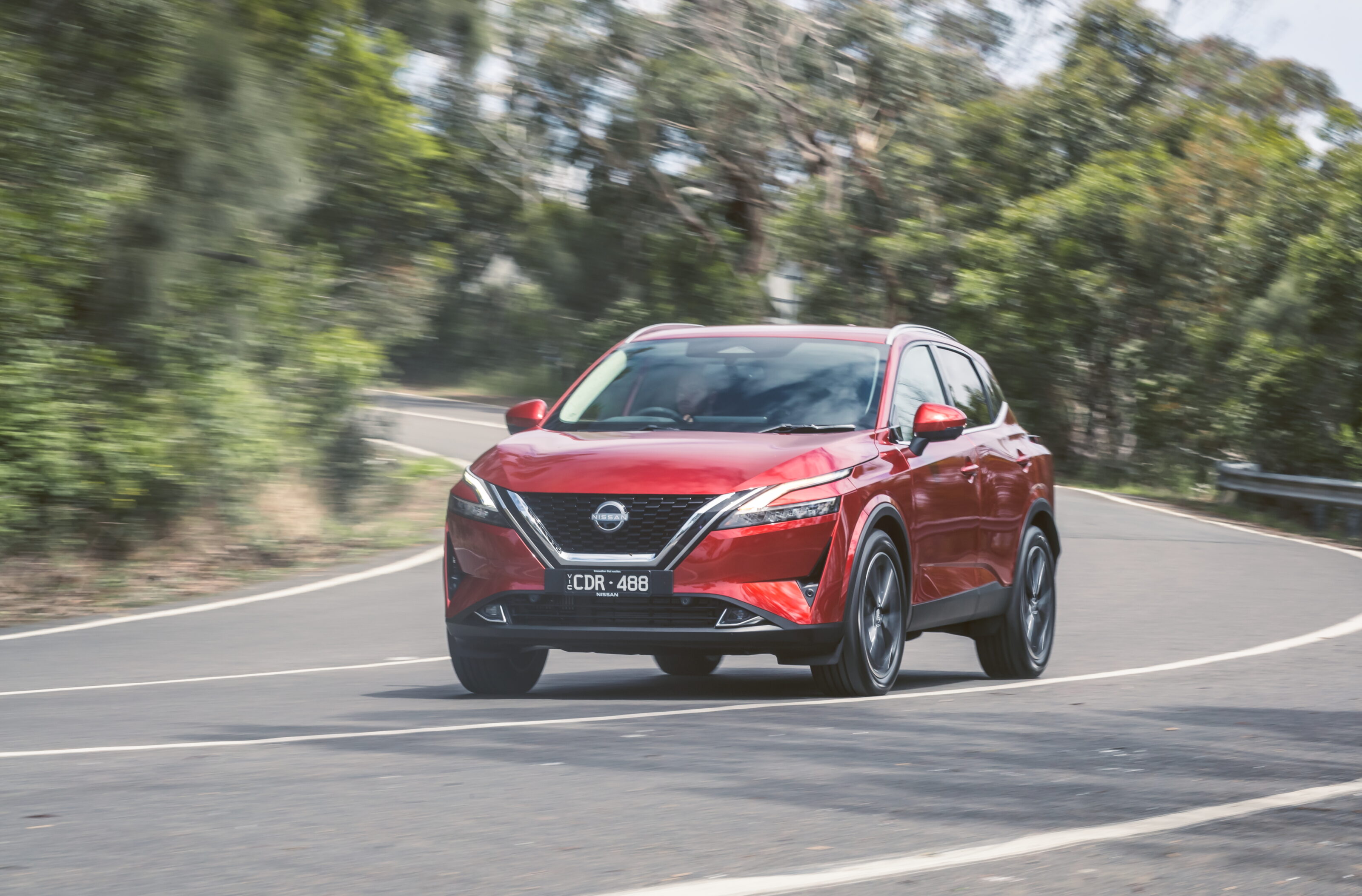
Overall noise, vibration and harshness are relatively subdued, though wind rush is definitely noticeable at speed on the freeway.
The ride is firmer compared with the previous Qashqai as well as some key rivals such as the Mazda CX-30 and Toyota Corolla Cross. The bumpier the road, the more noticeable it is.
There’s an upside for handling, though. Whether driving along twisty roads or through roundabouts, the Qashqai has a reassuringly planted feel.
The Nissan’s steering isn’t quite a match for its aforementioned rivals but is well weighted (read light) for urban motoring. A Sport mode adds some extra weight but could do with more.
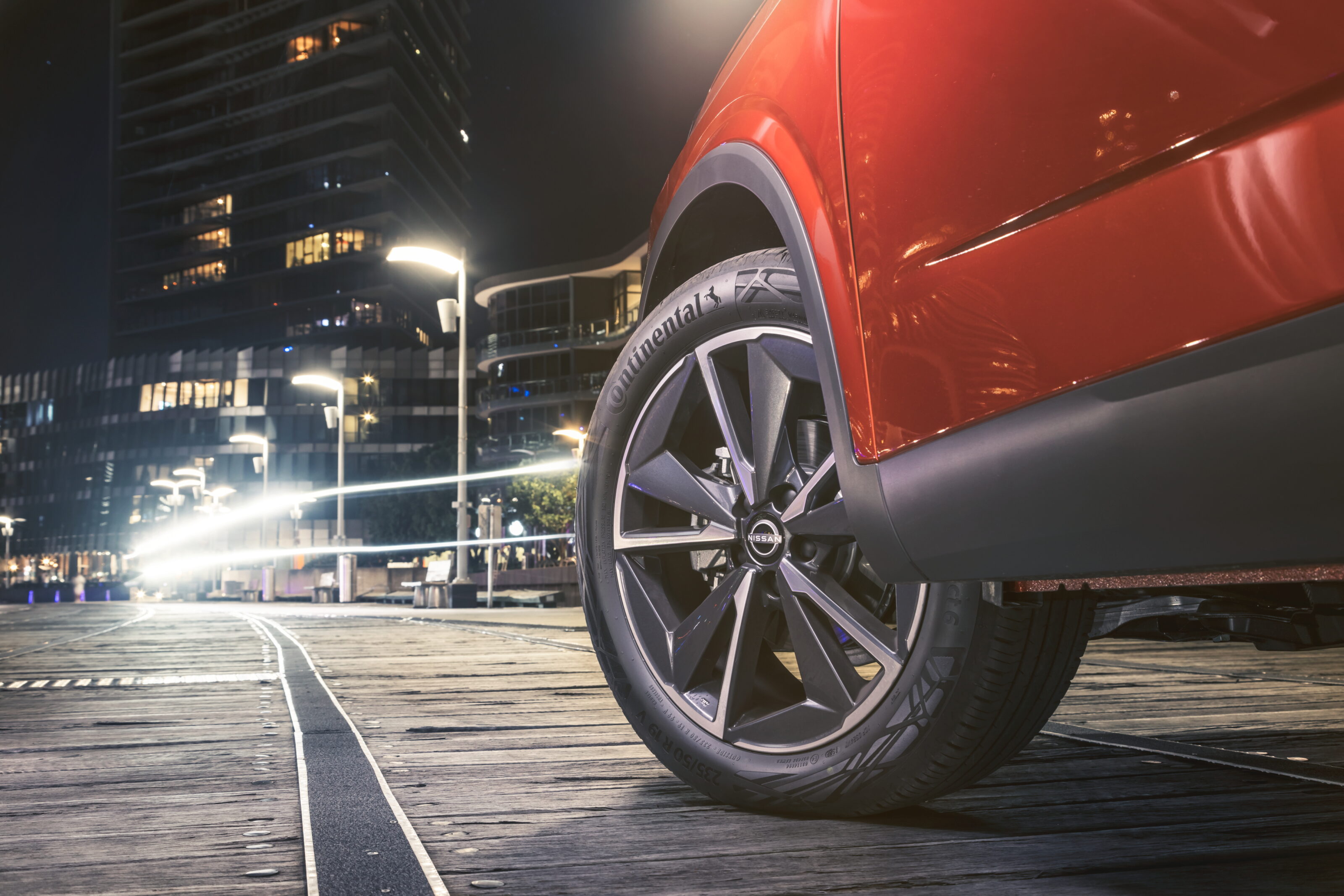
How is it on fuel?
Unlike many of its rivals, the Qashqai requires a minimum of 95 RON at the bowser.
Its official combined-cycle fuel economy rating of 6.1L is down from the old car’s 6.9L and our best result was a nifty 4.8L/100km gained from a combination of longer 30-60 minute journeys through either highways or hills, and short journeys around town.
For greater fuel efficiency, the e-Power hybrid arriving later this year has a quoted 5.3L/100km on the combined cycle – though that’s still higher than the 4.4L/100km of a (larger) RAV4 Hybrid.
| Model | Minimum RON | Fuel consumption (ADR combined) |
|---|---|---|
| Nissan Qashqai | 95 RON | 6.1L/100km |
| Toyota Corolla Cross | 91 RON | 6.0/100km |
| Mazda CX-30 | 91 RON | 6.8L/100km |
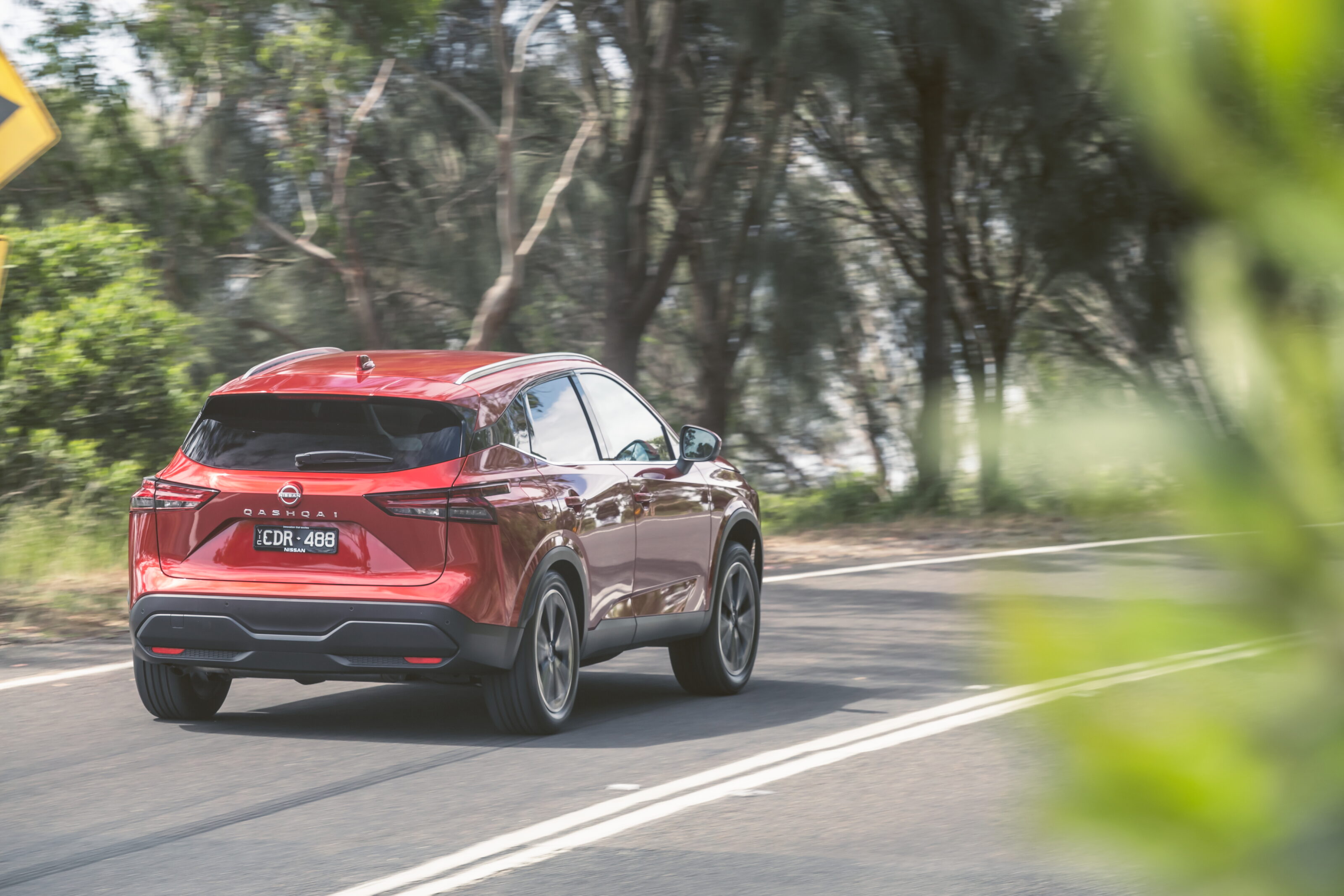
How safe is it?
The 2023 Nissan Qashqai was awarded a five-star ANCAP rating according to the testing authority’s 2022 protocols.
All variants get safety features such as a reversing camera and rear parking sensors, intelligent blind-spot intervention and blind-spot warning, rear cross-traffic alert, traffic sign recognition, forward auto emergency braking (AEB) with car, pedestrian, cyclist and junction detection as well as reverse AEB, intelligent lane intervention and lane departure warning.
The ST+ adds a 360-degree camera system with moving object detection, while the ST-L and Ti gain front parking sensors as well as Nissan’s ‘ProPilot’ semi-autonomous driving suite.

One extremely annoying safety feature, however, is the rear seat warning. Rather than just a light bong or notice on the digital instrument cluster to remind you to check the back seats for kids and pets you may have unwittingly forgotten about, the car emits four loud startling horn blasts – enough to wake your neighbours or make you look like some dullard in the supermarket car park who can’t figure out how to lock their car.
There also doesn’t seem to be any rhyme or reason as to why it does it sometimes and not others. The key can be in the vehicle, or not, it can be locked, or not. Fortunately, this can be turned off, but every few days it will ask you again just to be sure you really meant it.
Our understanding, based on information from Nissan at the vehicle’s recent launch, is that this is a tweak designed to make it comply with new ANCAP protocols on child safety.
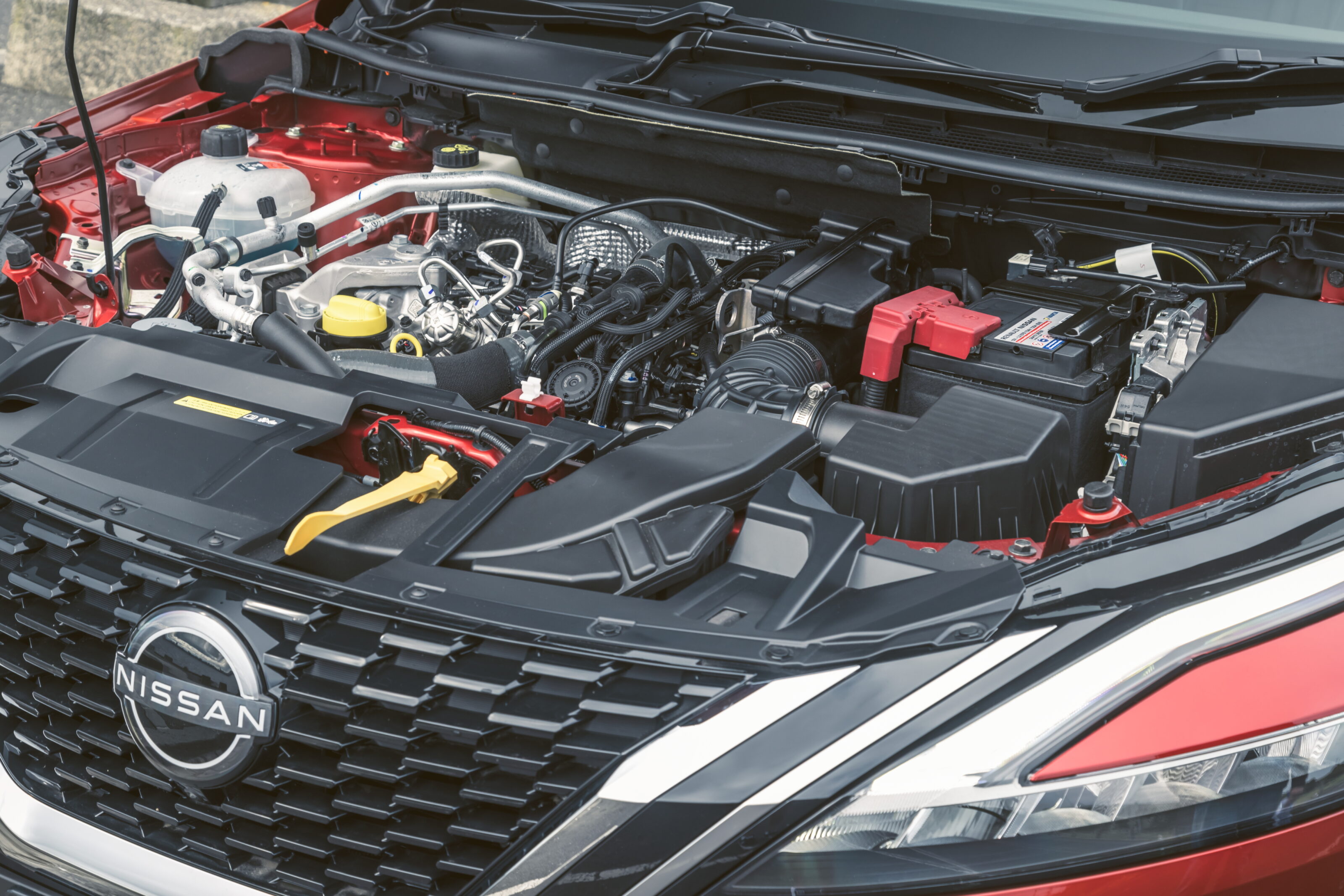
Warranty and running costs
Nissan offers the Qashqai with an industry-standard five-year, unlimited-kilometre warranty.
Servicing intervals are every 12 months or 15,000km, whichever comes first. It also comes with five years of free roadside assistance.
However, servicing isn’t cheap. For the first five years or 75,000km, it will cost a total of $2916 to service with Nissan, or on average $583.20 each year. The fourth and sixth visits cost more than $1000.
The rival Toyota Corolla Cross, for one example, costs $230 per visit for the five years for a total over that period of $1150.
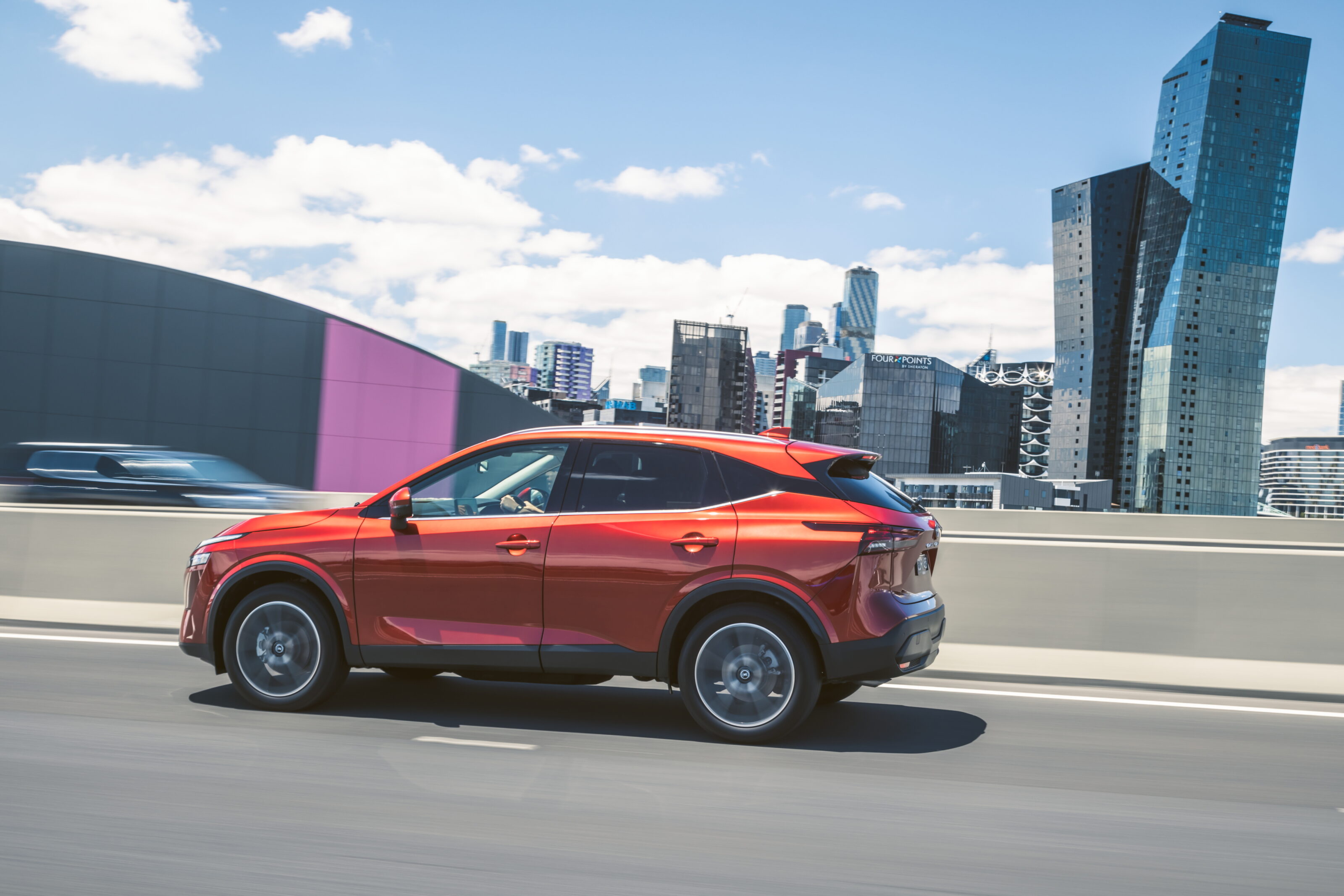
VERDICT
The new Qashqai is more than just a pretty face
The Qashqai has come a long way from the second generation, now offering a more premium experience and with a stronger powertrain to match.
We’re also impressed with the mid-range ST-L that has plenty to please buyers – such as the big screen, electrically adjustable driver’s seat and heated front-row chairs – without forcing them to go top of the range.
Although the price is getting a little high, the quality is there to justify it. The only real letdowns are a fidgety ride on uneven surfaces and those pricey servicing costs.
Specifications
| 2023 Nissan Qashqai ST-L | ||
|---|---|---|
| Engine | 1.3-litre turbo-petrol in-line 4-cylinder, 16-valve, direct injection | |
| Power @rpm | 110kW @ 5500rpm | |
| Torque @rpm | 250Nm @ 1600-3750rpm | |
| Transmission | continuously variable | |
| Body | 5-door, 5-seat small SUV | |
| L/W/H | 4425/1835/1625mm | |
| Wheelbase | 2665mm | |
| Boot space | 429-1524L | |
| Weight | 1482kg | |
| Fuel / tank | 95 RON / 55 litres | |
| Fuel use L/100km | 6.1L/100km (claimed) | 4.8L/100km (on test) |
| Suspension (front) | struts, coil springs, anti-roll bar | |
| Suspension (rear) | multi-link independent, coil springs, anti-roll bar | |
| Steering | electric rack-and-pinion; 11.5m turning circle | |
| Brakes | ventilated discs front and rear | |
| Wheels | 19-inch diameter / 255mm width | |
| Tyres | Continental Eco Contact 6 | |
| Tyre size & spare | 235/50 R19, space-saver spare | |
Score breakdown
Things we like
- Strong 1.3-litre turbo
- Plush interior with good use of space
- Good road-holding
Not so much
- Much more expensive than before
- Expensive to service
- Unsettled on uneven roads
- Infotainment can be glitchy
We recommend
-
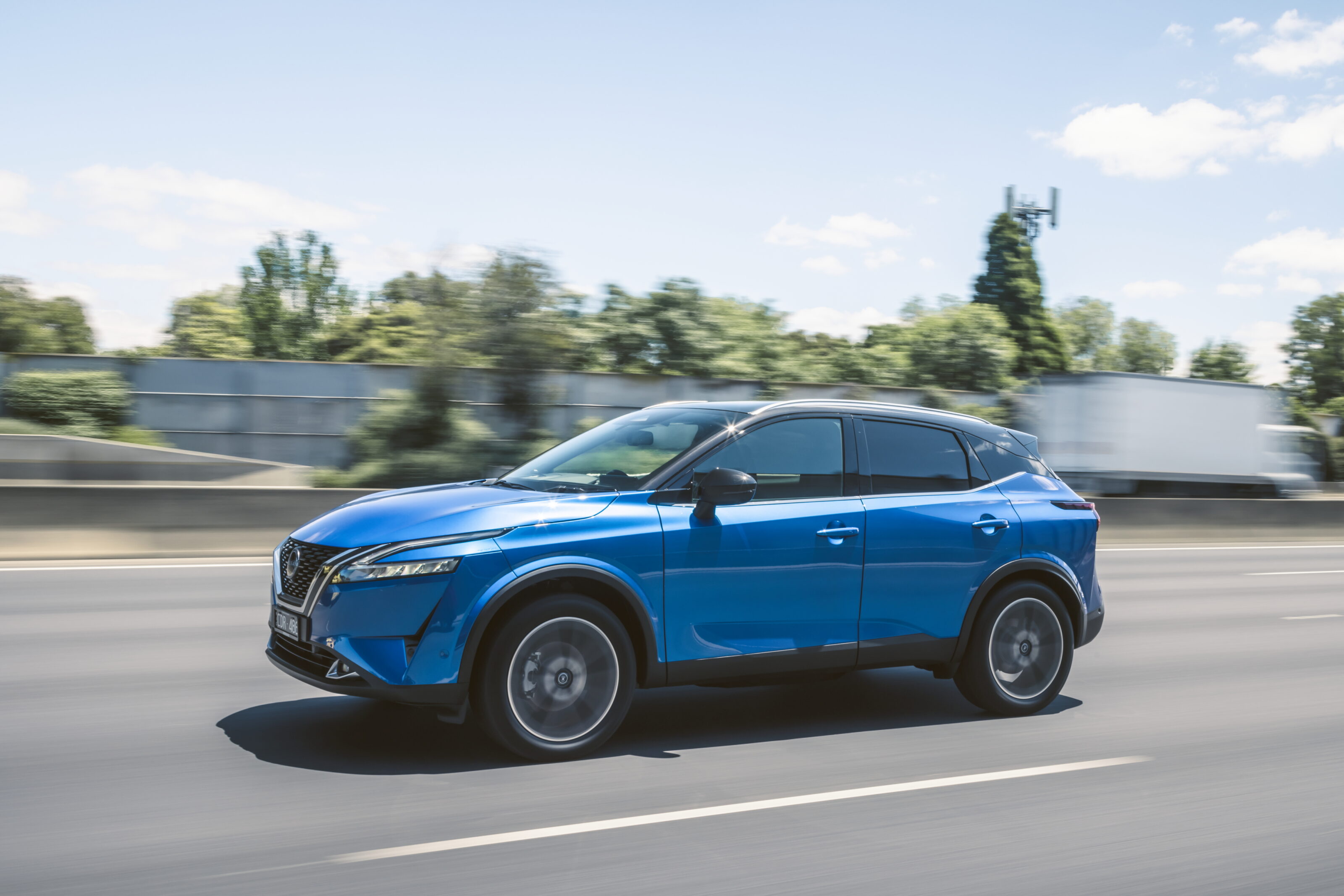 News
News2023 Nissan Qashqai Australian pricing and features confirmed
The all-new Qashqai has landed in Australia and prices are up between $3300-8300 depending on trim
-
Reviews
VIDEO: 2023 Nissan Qashqai review – First Australian drive
The third-gen Qashqai ain't cheap, but impresses with a spacious, plush cabin and class-leading cabin technology
-
 News
News2025 New Car Calendar: All the new cars coming to Australia
Take a look at our list of what is expected to launch in Australia in 2025 – plus those we might not see locally just yet


